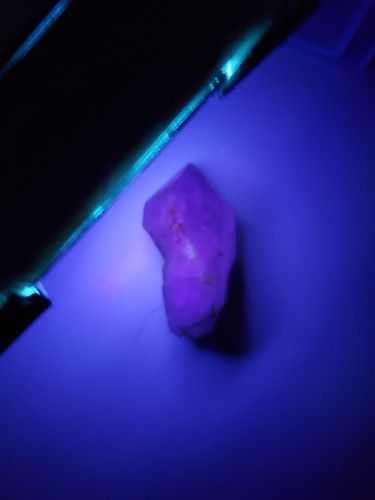So how would I use that when there’s multiple minerals and such?
You would get the specific gravity and a list of possible stones that it could be, lets say 6 possibilities, than you would google each one and see if any looks like your stone.
So specific gravity would be the best way to identify my stones and rocks?
If you have a nice polished surface like a gemstone , a refractometer would be a useful tool. But it looks like you have mostly stones so I would choose Specific gravity to get you in the range of possibilities. A magnet can also be helpful as some stones contain iron. But I think specific gravity would be your best bet to narrow the field and google for a photo.
Google has not been my friend in helping identifying anything so far lol
No, not when the stones/rocks consist of multiple minerals. Spec gravity works best with single crystals, but can be very error prone the first time you use it. Your other stones look like quartz in a matrix, no gemquality material, and i am a gemmologist, not a mineralogist.
It looks like very light weight and powdery material, so probably volcanic tuff.
It’s actually quite heavy and not powdery
Then it is not vulcanic tuff 
I would try a uv light. If it is corundum it will glow red. Otherwise I would try to chip a small piece off and do an RI and/or SG.
The shortwave there is only one spot that glows a different color and it’s a light yellow but the picture doesn’t show the color the best and some of the color on long wave turns pink 20210628_131229|375x500
A Quartz for sure…
The white is most likely quartz.
The brown and orange one is the piece I would use the uv light on.
So sw just turns the whole thing deep dark pink and long wave does nothing
If you can get a piece off of the crystal, (large enough to test) you can get an RI and then get a SG. Or if you have an idea what it might be, you could use a pen light and spectroscope. I haven’t found a better book for spectrums than the GIA lab manual.
If you hold the light at about a 45 degree angle and the spectroscope at an opposing 45, focus on the gem part and see what there is. This isn’t easy, but I have done it often.
The best way is to get a piece to get an RI. The RI will most often eliminate any guess work.
Good luck.
I actually acquired parts of several large collections with specimens that are roughly similar to both of yours. Your first is a milky quartz point, broken at one end and discolored by an iron oxide.
With the second, I cannot give you such a definite answer. However, I can point you in the direction of so mineral series which have characteristics similar to your specimen. The weight and solidity points to something containing the lead or iron. The colorization around the crystal pockets causes me to lean more towards Iron, as do the small pyrite flecks across the broken face.
There are crystal pockets and some type of crystal/mineral vein running horizontally on the left end. So far as an id on the crystals, the breaks are not clean enough nor is my knowledge thorough enough to provide that. (I am just learning) I would suggest Minedat.org and start looking at the iron specimens. That site will provide a listing of other minerals commonly found with iron. (go to the bottom of the page for the mineral Iron)
If you’d like to get rid of some of the “iron stain”, try IronOut.
It won’t do anything else to the crystal?
This looks like Basalt to me
The black with orange spots is amygdaloid basalt. Your green one may be as well. A variety of minerals can be found In basalt, which is common in upstate Michigan and Lake Superior
The large rock you posted is made up of multiple minerals, but it resembles some of the jasper pieces I’ve seen at my favorite beach for rock hunting. Most of the colors there are green base rock with red rings and white centers and red base with darker red rings and yellow or white centers. Some call it orbicular jasper while others say there’s no such thing. To each his own. My favorite specimen is a rust base with dark grey circles and putty centers. It’s striking. I’ll try and post some pictures tonight.
